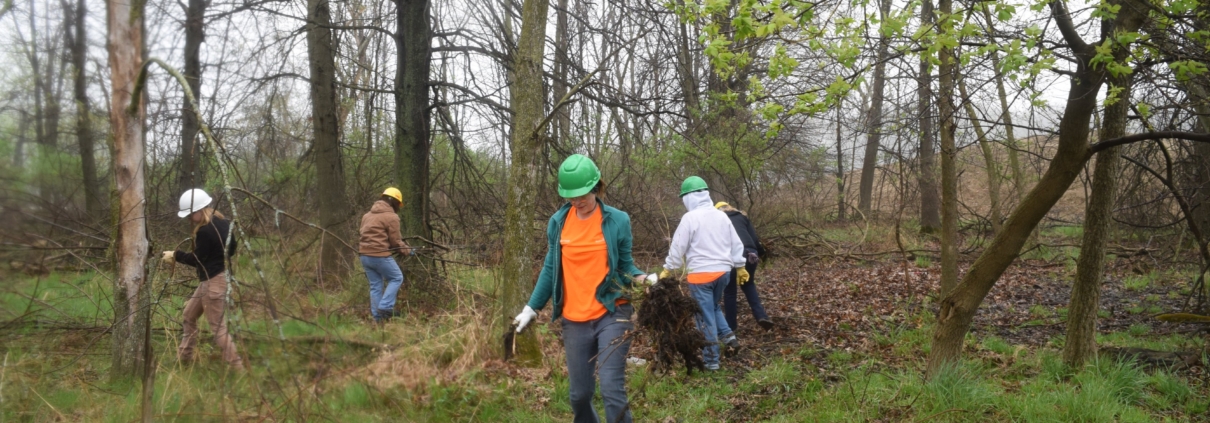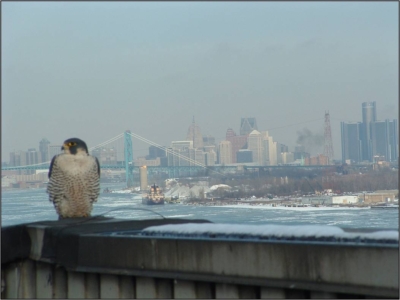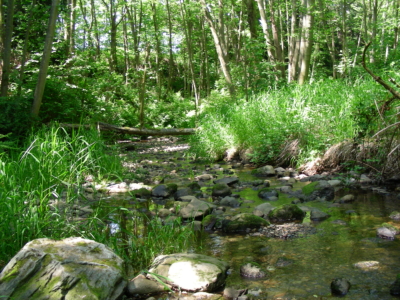Conservation of the Indiana Dunes National Lakeshore by Restoring Habitat at Praxair Burns Harbor
On April 22, 2016, Praxair Burns Harbor Industrial Gases hosted 20 volunteers from ArcelorMittal and a variety of other companies and conservation organizations to tackle the removal of invasive species from a small, wet pin oak woodland and sedge meadow located on the Praxair Burns Harbor Plant property. Volunteers came from the Wildlife Habitat Council, the Gary Conservation Team, the U.S. Forest Service, and members of the Indiana Coastal Cooperative Weed Management Group (including Indiana Department of Natural Resources, Coffee Creek Watershed Conservancy, and Shirley Heinze Land Trust).
WHC is the recipient of an Indiana Coastal Management grant from the Indiana DNR Coastal Program and the National Oceanic and Atmospheric Administration (NOAA) to develop early detection and control of invasive species projects on coastal industrial facilities. This grant has allowed us to reach out to several companies in the Lake Michigan coastal region of Northwest Indiana and develop on-the-ground programs that engage employees in the control of invasive species and expand their participation in conservation programs organized by members of the Indiana Coastal Cooperative Weed Management Group. Companies participating in this ongoing collaborative effort include ExxonMobil’s Hammond Terminal, ArcelorMittal’s Burns Harbor, ArcelorMittal’s Global R&D, and Praxair’s Lakeshore Plant.
During the April 22 cooperative workday, volunteers focused on removing two non-native, invasive species that are common invaders of Midwestern forests and oak savannas: honeysuckle and oriental bittersweet. The volunteers used a technique known as the “cut-stump method,” in which the shrubs are cut down and herbicide applied directly to the stump to prevent regrowth. Also on the agenda was to review with Praxair a site conservation plan that includes management of the pin oak wetland and the open spaces outside operations, as well as the creation of native and pollinator-friendly landscapes on the large berms created during the facility’s construction in the 1970s.
The group also shared their common knowledge and experience of working on site and in proximity to lands owned and managed by the National Park Service’s Indiana Dunes National Lakeshore. Indiana Dunes is celebrating its 50th anniversary and the National Park Service is celebrating its 100th anniversary. (Happy Centennial to the National Park Service!) By managing private conservation lands around the Indiana Dunes National Lakeshore, companies like Praxair are making a direct contribution to the biodiversity of the coastal region and the ecological health of public lands.
Multi-partner workdays like those at Praxair’s Burns Harbor demonstrate the power of collaboration in habitat conservation. When companies, agencies, and conservation organizations work together to restore native habitats, it helps everyone enhance the conservation value of their communities.
If your company would like to participate in our cooperative efforts in Northwest Indiana, we would be proud to have you participate! Please send us an email at dgoldfarb@wildlifehc.org to learn how your company can contribute to conservation efforts in this region.




